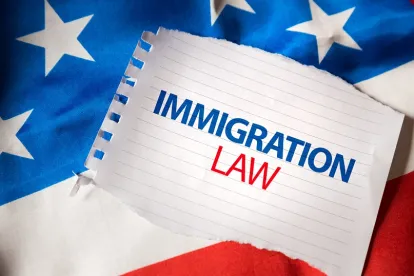On November 12, 2021, the US Citizenship and Immigration Service (USCIS) issued new policies conferring the benefit of automatic extension of employment authorization for certain H-4, E, and L nonimmigrant dependent spouses. This significant shift in policy comes on the heels of the Department of Homeland Security’s (DHS) settlement in Shergill et al v. Mayorkas, 2:21-cv-01296 (U.S.D.C., Western District of Washington), with H-4 and L-2 spouses challenging protracted delays in processing their work authorization applications.
Per the update to the USCIS Policy Manual, as of November 12, 2021, the EAD (Employment Authorization Document) of E-1, E-2, E-3, H-4 and L-2 dependent spouses will be automatically extended for a period of up to 180 days if:
-
The dependent spouse properly filed an Application for Employment Authorization (Form I-765) for a renewal of their EAD, in the same class before the current EAD expired; and
-
The dependent spouse has an unexpired Form I-94 indicating valid E, L, or H-4 derivative status.
Any such automatic extension of work authorization will terminate automatically on the earlier of:
-
The end of the validity period of the nonimmigrant status, as shown on the Form I-94;
-
The approval or denial of the application to renew the previous EAD using Form I-765; or
-
180 days from the date of the expiration of the previous EAD.
The benefit of the automatic EAD extension could be limited or unavailable to certain L and E spouses since the auto-extension of the EAD cannot extend beyond the spouse’s E or L status. As such, if the EAD and status expire at the same time, the auto-extension may be short-lived or unavailable. To avoid this issue, principal L and E employees may seek to extend their status as soon as they are eligible, which is 180 days before their current status expires. The E or L spouse could then travel outside the U.S., receiving a new I-94 to match the principal employee’s upon re-entering the country, and immediately file their EAD extension petition.
Employer I-9 Procedures
For employers hiring or re-verifying such employees, the following combination of documents are acceptable for I-9 purposes to evidence the automatic extension of the previously expired EAD, per recent updates to the USCIS Handbook for Employers M-274:
-
The facially expired previous EAD referencing categories A17, A18, or C26, as applicable;
-
A Notice of Action (Form I-797C) for Form I-765 with class requested in the same category as the expired EAD ((a)(17), (a)(18), or (c)(26)as applicable), and showing that the renewal application was filed before the EAD expired; and
-
An unexpired Arrival-Departure Record (Form I-94) reflecting H-4, E, or L derivative status.
E and L Dependent Spouses Work Authorized Incident to Status
Within the next four months, USICS and U.S. Customs and Border Protection (CBP) will begin issuing Form I-94 admission documents for E-1, E-2, E-3, and L-2 spouses with notations indicating that these individuals are authorized to work incident to their nonimmigrant status. In other words, these spouses will no longer be required to apply for an EAD to evidence their authorization to work and the annotated I-94 document will be an acceptable I-9 document for work authorization. However, until these changes are implemented, E and L spouses will need to present an EAD (or evidence of an auto extension as described above) for work authorization.




 />i
/>i
